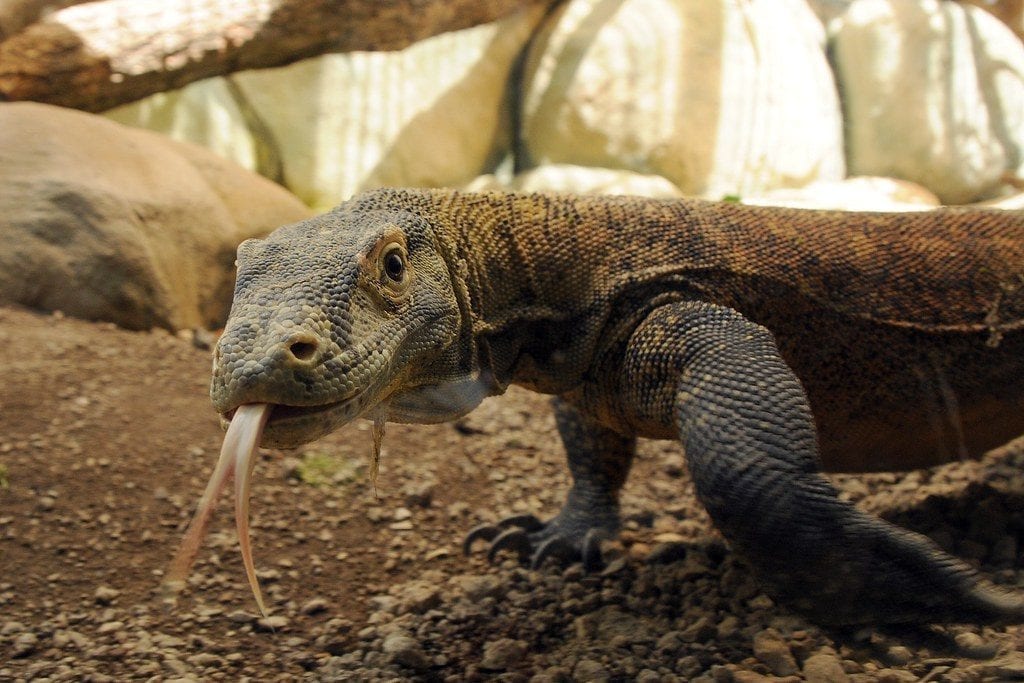Asia is in a mood to close tourism islands. After Boracay in the Philippines and Maya Island in Thailand, Komodo Island in Indonesia may be next.
A decision on Komodo Island’s closure will only be made by this year’s end, as our report below shows. But an announcement by East Nusa Tenggara Governor Viktor Laiskodat in November 2018 that the island would be closed for a year starting January 2020 has turned out to be premature. It has caused so much confusion and loss of business for tourism operators, not to mention loss of sleep for the island community involved.
At the heart of this debacle is Komodo dragons in the wild. They are rare — reportedly around 1,000 to 5,000 living today — and are found roaming freely on five islands in Indonesia. The most famous of these are Komodo Island, Rinca Island, and Padar Island, which are part of Komodo National Park.
The latest reviews of Komodo National Park on TripAdvisor show most visitors were pleased with their trip. No one complained of overcrowding or disappointments over dragon no-shows.
Unlike Boracay and Maya, which were overcrowded, reasons cited thus far for a possible Komodo Island closure invite plenty of questions. The main reason reportedly is to reduce or eliminate the poaching of animals — the Komodos themselves and their prey, such as buffalo and deer. Following the rehabilitation, fees to the park would rise audaciously to at least $500 per international visitor from $10.50 currently, if governor Laiskodat has his way.
But why close Komodo Island only and not Rinca Island, where lots of komodos could also be found? Would the closure result in more poaching on Rinca? And how do authorities plan to stop poaching after reopening Komodo Island later, when they are unable to prevent it now?
How does charging foreign tourists $500 help sustain the island and its Jurassic-like lizards? How on earth did the governor arrive at such an astronomical figure as $500 when, say, a fantastic destination such as Ecuador’s Galapagos charges $100 per adult, aside from a $20 Transit Control Card?
This is a tragicomedy. Closure on the issue is needed.
— Raini Hamdi, Skift Asia Editor, rh@skift.com, @RainiHamdi
Skift Stories and More Expert Insights
Indonesia’s Komodo Island Beset by Confusion, Not Overtourism: A final, clear decision on whether Komodo Island or Komodo National Park will be closed must be made, and ample time given to the trade should it be a go. What a mess.
AirAsia Chief Tony Fernandes Takes On Added Role as CEO of Airline’s Website: AirAsia’s head honcho can’t wait to transform the airline — he’s in the driver’s seat for AirAsia.com and pulling in the best of his troop on the journey. Second-quarter results, just out, show a rather promising platform.
Grab to Pump $500 Million Into Vietnam as More Rivals Enter After Uber’s Exit: After Indonesia, Grab’s next biggest battleground is Vietnam. No surprise there. It’s a rapidly growing economy with all the ingredients for a ridehailing explosion. Naturally Grab is not alone — rivals are aplenty.
TravelSky’s Performance Offers a View of China’s Slowing Air Travel Market: New data from China’s travel tech giant TravelSky show that the country’s pace of air travel growth slowed in the first half of the year. But the country remained the fastest-growing region in the world in terms of aviation and traveling.
Thomas Cook Closes In on $1.1 Billion Rescue Deal: Thomas Cook’s chances of escaping its current financial mess still rest in the hands of Fosun and its creditors. While the rescue deal is good news for travelers and the company’s employees, there are still a number of hurdles to clear.
Google Maps Poised to Be an $11 Billion Business in 4 Years: When you’re Google, you can take more than a decade to hone a product such as Google Maps and attract more than a billion users without having to worry that it isn’t making lots of money. But the monetization of Google Maps will soon start in earnest, and travel marketers, including those in Asia, for the most part, will hustle to get in.
Asia Editor Raini Hamdi [rh@skift.com] curates the Skift Asia Weekly newsletter. Skift emails the newsletter every Wednesday.
Subscribe to Skift’s Free Asia Weekly Newsletter
Subscribe to Skift Pro to get unlimited access to stories like these
{{monthly_count}} of {{monthly_limit}} Free Stories Read
Subscribe NowAlready a member? Sign in here
Subscribe to Skift Pro to get unlimited access to stories like these
Your story count resets on {{monthly_reset}}
Already a member? Sign in here
Subscribe to Skift Pro to get unlimited access to stories like these
Already a member? Sign in here
